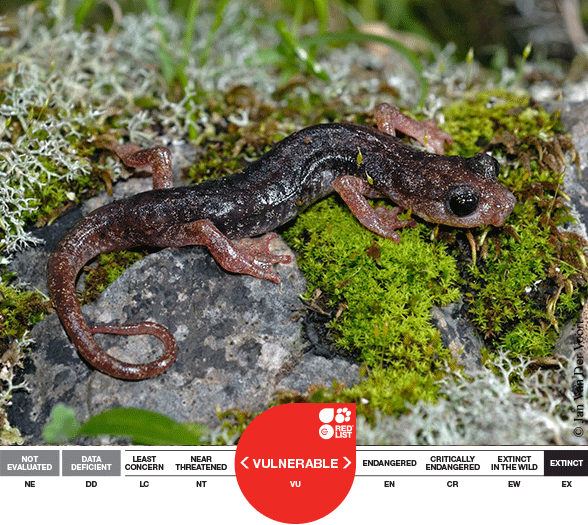
Classified as ‘Vulnerable’ on the IUCN Red List of Threatened SpeciesTM, the Sardinian or Gene’s Cave Salamander, Atylodes genei, is endemic to Europe, occurring only in southwest Sardinia, Italy. It has a relatively small range (less than 20,000 km2) and has been recorded in fewer than 10 locations. This species lives in moist rocky outcrops, caves, and forested areas near streams. The Sardinian Cave Salamander is amazing for being lungless and for laying eggs on land that hatch into fully formed salamanders instead of having a larval stage. Its closest relative is Hydromantes, salamanders in California, USA, which also live in rocky outcrops in rugged terrain.
The populations of Sardinian Cave Salamanders are in decline because of habitat loss due to deforestation, mineral extraction, and urbanisation.
The Sardinian Cave Salamander is listed on both the Bern Convention, Appendix II, and the EU Habitats Directive, Appendix IV. Its native range occurs within at least four protected areas, however due to its limited range there is a need for close monitoring of the populations.
